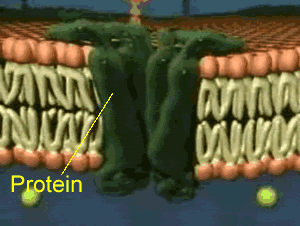
Mrs. Dietrich's Biology Blog
Wednesday, June 22, 2016
Monday, May 4, 2015
Monday, April 6, 2015
Answer Key to Genetics Study Guide
2. 46
3. 23 males xy and females xx
4.
homozygous, heterozygous, genotype, phenotype, dominant, recessive, allele - see blog post under 3rd nine weeks link
incomplete dominance - the heterozygous genotype shows a blend between the two traits (like mixing paint - red and white make pink)
codominance - the heterozygous genotype produces both traits red and white make red and white stripes or red and white spots.
sex-linked - the gene is found on the x chromosome. Males only get one gene for it and therefore, the traits are more common in males (colorblindness, hemophilia are common examples)
meiosis - division of sex cells or gametes, produces 4 haploid gametes
haploid - half the number of chromosomes
diploid - full set of chromosomes
crossing over - when mother and father chromosomes exchange genes during prophase 1 of meiosis
5. To do this, know the steps for interpreting a pedigree on your bold print sheet.
6. Review blood type problems from Thursday and Friday
9. We went over all other problems in class except the first pedigree. It is autosomal dominant
3. 23 males xy and females xx
4.
homozygous, heterozygous, genotype, phenotype, dominant, recessive, allele - see blog post under 3rd nine weeks link
incomplete dominance - the heterozygous genotype shows a blend between the two traits (like mixing paint - red and white make pink)
codominance - the heterozygous genotype produces both traits red and white make red and white stripes or red and white spots.
sex-linked - the gene is found on the x chromosome. Males only get one gene for it and therefore, the traits are more common in males (colorblindness, hemophilia are common examples)
meiosis - division of sex cells or gametes, produces 4 haploid gametes
haploid - half the number of chromosomes
diploid - full set of chromosomes
crossing over - when mother and father chromosomes exchange genes during prophase 1 of meiosis
5. To do this, know the steps for interpreting a pedigree on your bold print sheet.
6. Review blood type problems from Thursday and Friday
9. We went over all other problems in class except the first pedigree. It is autosomal dominant
Friday, March 27, 2015
Thursday, March 12, 2015
Answer Key for Mitosis and Meiosis Snow Day Homework
Name of Phases with Descriptions
1. Prophase 1
2. Anaphase 1
3. Telophase 2
4. Metaphse 2
5. Prophase 1
6. Anaphase 2
7. Metaphase 1
8. Telophase 1
Diagrams
1. Anaphase 1
2. Anaphase 2
3. Prophase 1
4. Metaphase 1
5. Metaphase 2
6. Telophase 1
7. Prophase 2
8. Telophase 2
Mitosis and Meiosis Comparison
Mitosis produces 2 cells while meiosis produces 4.
The cells produced in mitosis are identical to the parent while those in meiosis are not.
There are 4 phases in mitosis: prophase, metaphase, anaphase, and telophase. However, meiosis has 8 because each phase happens twice.
Crossing over only occurs in prophase 1 of meiosis. Chromosome pairs only line up in meiosis 1. During mitosis and during meiosis 2 (which is exactly like mitosis), chromosomes line up singly. Meiosis produces haploid gametes (sex cells with half the number of chromosomes) while mitosis produces identical cells with the diploid number or full number of chromosomes.
Mitosis has 1 divison while meiosis has 2.
Mitosis and meiosis are similar in that they are both types of cell divisions. Mitosis and meiosis 2 are exactly the same.
1. Prophase 1
2. Anaphase 1
3. Telophase 2
4. Metaphse 2
5. Prophase 1
6. Anaphase 2
7. Metaphase 1
8. Telophase 1
Diagrams
1. Anaphase 1
2. Anaphase 2
3. Prophase 1
4. Metaphase 1
5. Metaphase 2
6. Telophase 1
7. Prophase 2
8. Telophase 2
Mitosis and Meiosis Comparison
Mitosis produces 2 cells while meiosis produces 4.
The cells produced in mitosis are identical to the parent while those in meiosis are not.
There are 4 phases in mitosis: prophase, metaphase, anaphase, and telophase. However, meiosis has 8 because each phase happens twice.
Crossing over only occurs in prophase 1 of meiosis. Chromosome pairs only line up in meiosis 1. During mitosis and during meiosis 2 (which is exactly like mitosis), chromosomes line up singly. Meiosis produces haploid gametes (sex cells with half the number of chromosomes) while mitosis produces identical cells with the diploid number or full number of chromosomes.
Mitosis has 1 divison while meiosis has 2.
Mitosis and meiosis are similar in that they are both types of cell divisions. Mitosis and meiosis 2 are exactly the same.
Sunday, March 8, 2015
Subscribe to:
Posts (Atom)